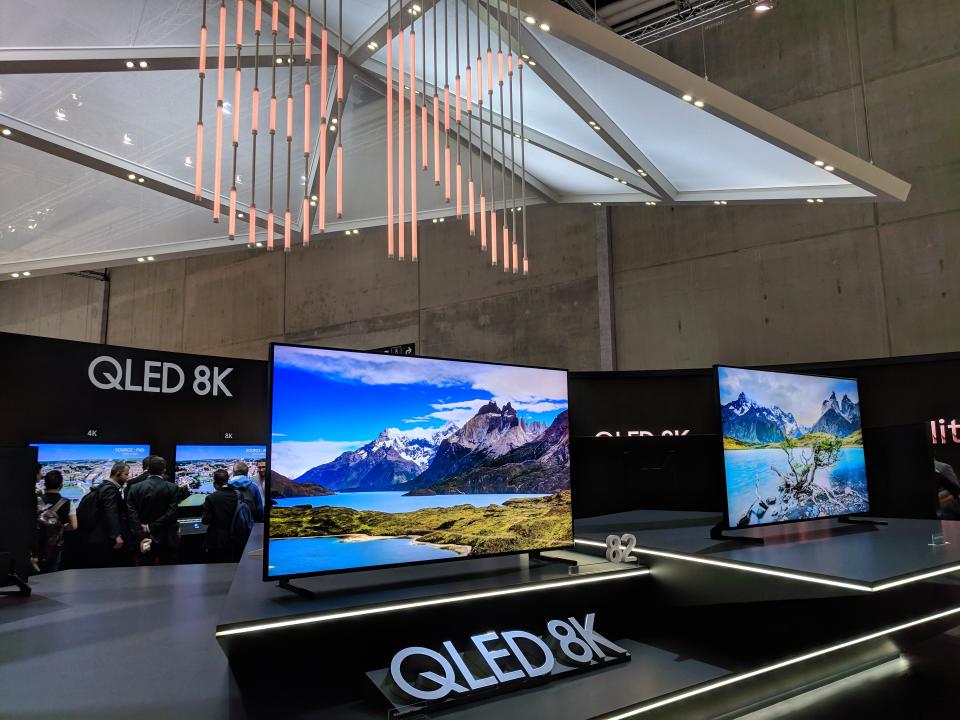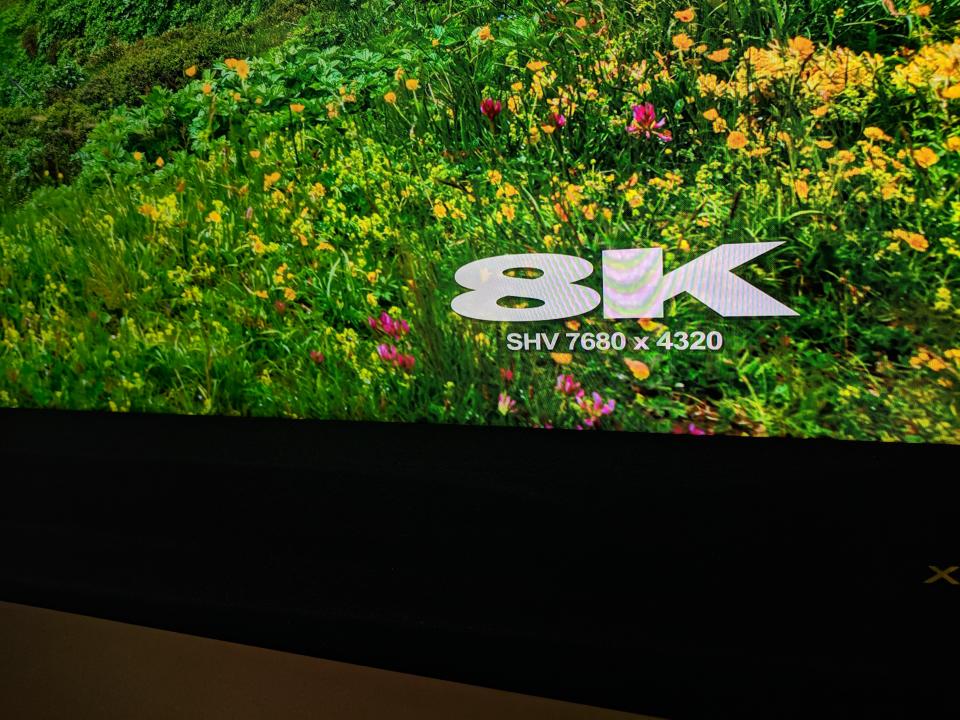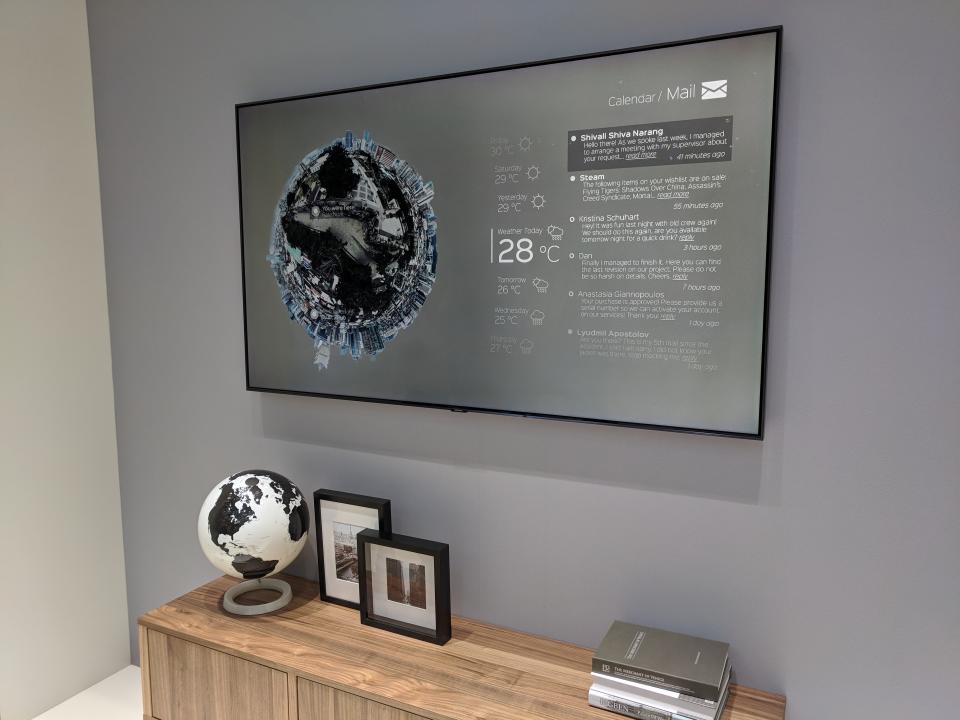Forget 4K TVs — 8K televisions are already here

BERLIN—Despite the fact that 4K TVs remain short on Ultra High Definition 4K content outside of some streaming services and Blu-ray discs, three of the biggest television manufacturers are pushing the limits of screen resolution even higher by introducing their own 8K sets.
“The time has come for us to champion the next era in screen resolution,” Samsung U.K. TV marketing director Guy Kinnell said at that firm’s press conference Thursday morning at the IFA tech trade show here. “Viewers can see what they’ve never seen on a TV before.”
But the 8K sets introduced by Samsung, LG and TCL—each offering 33,177,600 pixels instead of the 8,294,400 pixels found on 4K TVs—don’t deserve your dollars. They offer exponentially less stuff to watch in their native resolutions, the extra pixels are noticeable by the human eye at most viewing distances, and they use more power.
“8K is overkill,” said Mark Vena, senior analyst at Moor Insights & Strategy. In this case, more is not better. It only equals more money gone from your bank account.
Samsung, LG and TCL’s 8K debuts
Samsung put the biggest emphasis on 8K at IFA, showing off 65-inch, 75-inch, 82-inch and 85-inch sets without announcing prices or shipping dates. Those details won’t come until October.
At its press conference, the Korean firm pitched 8K as a logical answer to a steady increase in screen sizes and suggested that its software’s ability to upconvert 4K footage would solve the problem of having nothing to watch in 8K.
At Samsung’s exhibit, a highlight reel showed clips originally produced in standard definition, high-def and 4K, alongside 8K-enhanced versions of each. The 4K clips enhanced to 8K showed the least difference, especially from more than a few feet away, while HD video shown in 8K looked meaningfully sharper. But an SD clip of two TV anchors enhanced to 8K left the announcers looking disturbingly plastic.
LG only announced one 8K set, an 88-inch OLED (Organic Light Emitting Diode) TV. OLED screens offer better contrast ratios and are much thinner than the LED-backlit LCDs that dominate the market, but also cost a lot more.

LG didn’t reveal pricing or a shipping date for its TV, but as of Aug. 31 its cheapest 4K OLED model was a 65-inch set discounted to $2,499.99, so you can expect the 8K version to be quite a bit pricier. The company’s top-of-the-line 4K LCD of the same size costs less than half as much.
The 8K set on display here showed a highlight reel dominated by still images of such detail-intense subjects as stacks of money and newspaper front pages.
Finally, TCL showed off a 75-inch 8K set. It, too, did not announce a price or shipping date, although its history of selling TVs for less than the likes of Samsung and LG suggests its 8K set wouldn’t be quite as expensive.
Why you should ignore them
But at any price, 8K TV represents a lousy deal. Outside of Japan, where the broadcaster NHK has been working on broadcast and satellite delivery of 8K, your options for viewing native 8K content amount to a small but growing selection of YouTube clips posted in 8K for which you’ll need an internet connection of upwards of 50 megabits per second of bandwidth.
While those speeds are not nearly as scarce as they once were, broadband subscribers with sufficient bandwidth still risk blowing through their providers’ data caps after a bout of 8K binge-watching.
Don’t expect this online-only availability to change, as IHS Markit analyst Paul Gray explained in an email, “We still see no country with any 8K broadcasts plans in the pipeline apart from Japan.”

Upconverting offers a workaround but can’t fix a second flaw with 8K: You won’t see those extra pixels from the average viewing distance. Far more so than even 4K, 8K demands a gigantic screen; otherwise, a 4K display will itself exceed your retinas’ ability to discern that extra resolution.
The same math that determines whether individual pixels on a smartphone or tablet can be seen with 20/20 vision reveals that even an 85-inch 4K set exceeds human resolution from six feet away. So at that distance, an 8K set would look no sharper. With a 65-inch 4K set, that minimum viewing distance drops to less than four and a half feet.
Plus, 8K TVs use more electricity than 4K models. “8K is definitely worse on power,” Gray said, explaining that their panels are about 20% to 30% less transparent and therefore require more powerful backlights.
Samsung’s proposed remedy for the problem of having a powered-down 85-inch TV look like a hole in your wall, called Ambient Mode, which keeps the display on to show a color or pattern matching the wall, would only compound that problem.
As a result, IHS’s estimates don’t call for 8K to amount for more than a tiny fraction of the TV market by 2022. Expect 5.38 million sets sold worldwide—most in China as “tech fashion not due to content consumption or availability,” Gray said—versus more than 140 million 4K sets worldwide.
“There’s always going to be an early adopter out there who clamors for something like that,” Moor’s Vena explained. “To me, that’s always going to be the minority of customers.”
Disclosure: IFA’s organizers are covering most of my travel expenses and those of a group of U.S. journalists and analysts.
More from Rob:
Email Rob at rob@robpegoraro.com; follow him on Twitter at @robpegoraro.

 Yahoo Finance
Yahoo Finance 
